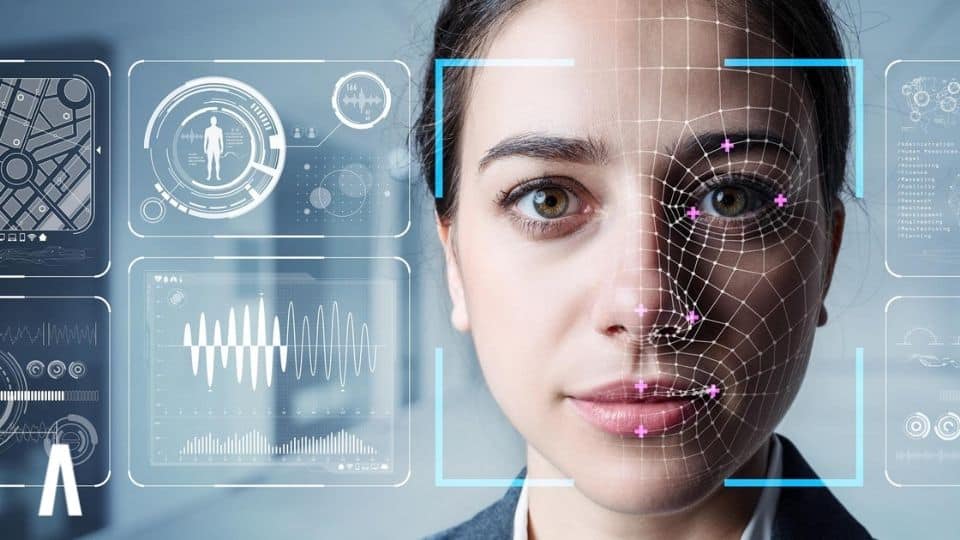How Artificial Intelligence is impacting Pathology
Blog | April 30 2021 | Alldus Recruitment
There is arguably no sector more suited to the applications of AI and Machine Learning than the healthcare sector. The ability of computational tools to analyse and extract insights from vast amounts of unstructured data is a seemingly perfect fit for an industry that accrued 2,314 Exabyte’s of new data in 2020 alone.
From drug discovery to patient records, there are few areas in healthcare delivery that haven’t been impacted by AI in some way, and pathology is no different.
Although still in its infancy, AI-based computational pathology is an emerging discipline that has shown great promise in improving the accuracy of patient diagnoses and addressing some of the key issues that have plagued the field in recent years.
Here we will take a look at just some of the ways AI is being leveraged support pathologists in the complex decision-making process and reduce the burden on an increasingly overstretched workforce.
Issues in Pathology
From diagnostic testing to disease prevention, pathology underpins all aspects of patient care. It is the job of a pathologist to understand the nature of disease and advise on the best treatment options.
Covering several distinct specialties from haematology to histopathology, the job of a Pathologist is incredibly complex, and until recently the core technology remained the microscope, something that hasn’t changed much since the mid-19th Century.
As part of our AI in Action series we were joined by Felix Faber of MindPeak, who gave us an insight into the diagnostic process.
“Let’s say there’s a suspicion of cancer in a patient based on a radiology image. A possible next step is a biopsy, where a small piece of tissue is taken from the body and brought to a lab where it is cut into very thin layers. These layers are then put on glass slides and stained with chemicals to show the morphology of the different cells a little more clearly.
A pathologist will then look at this tissue under the microscope to search for tumour cells”
This is a laborious and time-consuming process, compounded by the fact there is a chronic shortage of pathologists to keep up with an ever-increasing workload. In the 10 year period leading up to 2017 the number of pathologists in the US fell by 18% as the diagnostic workload per pathologist grew by 42%. A similar study in the UK found that only 3% of Histopathology departments were adequately staffed to meet the demand for testing.
Staff shortages are just one of the problems facing Pathology.
Typically each laboratory will have different processes when preparing a tissue for diagnosis, meaning a tissue sample from lab A may look different to one from lab B. The process of reading pathology slides is also highly subjective, with experts often disagreeing on diagnoses. Returning to our conversation with Felix Faber, he gave us some further insights into this problem.
“In many cases there’s a huge discrepancy between experts on what is the “ground truth”. For example, in prostate Cancer there is a grading system called the Gleason scheme used to assess the aggressiveness of a tumour, and previous studies have shown only a 60% accordance between pathologists”.
AI & Machine Learning are increasingly being leveraged to alleviate the burden placed on overworked pathologists, and to limit the discrepancies between diagnoses from different laboratories.
AI in Pathology
Significant technological advancements in recent years have led to the advent of digital pathology, allowing for the more effective acquisition, management and interpretation of pathological information. In contrast to traditional methods, where glass slides were viewed by pathologists under a microscope with the naked eye, samples can now be digitized for more detailed analysis on a computer.
This digitization has led to a host of opportunities for the application of machine learning techniques to extract insights from the vast amounts of stored data and improve diagnostic methods.
One such example is the work being done by Dr. Sahirzeeshan Ali and his team at the Centre of Computation Imaging and personalized medicine (CCIPD) at Case Western Reserve Medical University.
The CCIPD are developing image analysis and machine learning tools that can predict the progression of cancerous tissue based on the size and orientation of cells, something that is incredibly difficult to spot with the naked eye. The team at Case fed their machine learning model with data from thousands of biopsies, enabling the AI to learn from previous cases and accurately predict whether a cancer will become aggressive, allowing for customised treatment pathways.
In an experiment conducted on 251 breast cancer images, the CCIPD algorithm was able to accurately predict the recurrence of cancer in 76% of patients. To put that figure into context, traditional laboratory tests operate at around 66%, take 2 weeks to complete and cost $4000 whereas the AI was able to complete the tests in 2 hours over a cloud network at a fraction of the cost.
Not only will breakthroughs like this reduce the workload on understaffed histopathology departments through automation, it will also allow for efficient and affordable testing in developing countries that lack the necessary financial and diagnostic resources.
As part of our AI Mentors podcast series, we were joined by Paige CEO Leo Grady, who gave us an insight into how the work they are doing is helping pathologists to make more informed and efficient diagnoses.
“Paige is partly owned by Memorial Sloan Kettering, one of the best cancer hospitals on the planet, and it was spun out to take the AI technology that had been developed in the hospital to the next level, helping to diagnose and treat patients with cancer.
As part of that spin out agreement we were given the use of license for all their digitized pathology slides, an enormous repository adding at a rate of about 100,000 new slides a month. And with that incredible data resource we’ve built the first clinical grade AI in pathology, which has received FDA breakthrough designation.”
Paige’s platform enables researchers to view and share tissue samples remotely, while leveraging deep learning techniques on petabyte-scale datasets to discover insights in pathology images more comprehensively than clinicians are able to do with traditional methods.
The breakthroughs achieved by Paige and the CCIPD are not in isolation either.
Felix Faber gave us some great insights into the problems facing pathologists, but his team at MindPeak are also committed to solving them.
A group of machine learning and pathology experts, the team at MindPeak are developing tools that automate the process of tissue analysis, finding and categorizing tumor cells and showing the results to pathologists, allowing for a faster and more informed decision-making process.
MindPeak employed unsupervised learning methods to pre-train their networks, leveraging a catalogue of both labelled and unannotated pathology images to identify and learn relevant patterns.
Increased life expectancies, coupled with more diverse treatment options, has led to more cancer cases than ever before. This has resulted in a backlog of slides waiting for analysis, with fewer pathologists available to do the work, increasing the waiting time for patients requiring potentially life-saving treatments.
The above examples represent just some of the ways AI is being leveraged to automate diagnoses and assist in the decision-making process.
The most exciting applications of AI in pathology are those that combine human expertise with computational systems to significantly reduce not only the error rate of diagnoses, but also the associated time and costs.
Leo Grady of Paige perhaps sums it up best with the following statement:
“Our aim is to support pathologists around the world and to completely transform the discipline into one that is leveraging modern AI technology in order to save time, improve quality standards and ultimately build new computational tests and diagnostics that can deliver additional insights for Doctors about patients”
Despite still being in its infancy, AI-based computational pathology is showing great promise in addressing some of the critical issues in the field. While Paige was the first AI in Pathology to receive FDA breakthrough designation, continued advancements in research mean they look set to be the first of many.
If you’re interested in exploring a career in AI in Pathology, check out our latest Artificial Intelligence Jobs or upload your resume today to keep up-to-date with the latest jobs in your field.
share
related articles
Women in AI: Bridging the Gap
Despite huge advancements in AI research, the field still lags in another key area of societal progress, gender equality. With women accounting for just 22% of professionals in the field, we examine the steps needed to address this inequality and how it would also benefit the technologies themselves
Why SQL is the base knowledge for data science
As a programming language, It's a simple skill to learn, but a very valuable one. A walk in the park compared to Python or R.
Why NLP is the future of E-Commerce
There are great benefits to using NLP in eCommerce. The world of business would be greatly benefited from in-depth insights that are controlled by AI. It will help in increasing customer satisfaction rates, improve the revenue curve & ultimately transform the future of business operations.




